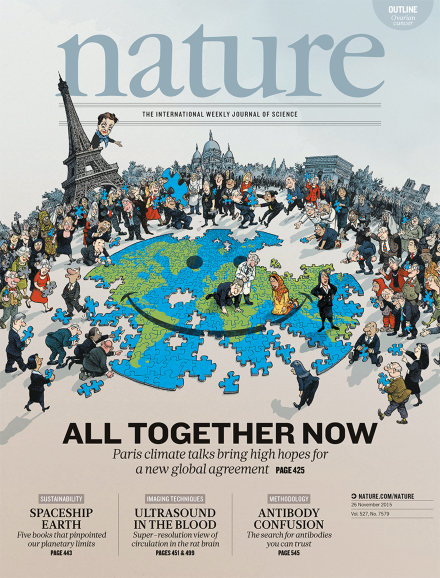Volume 527 Issue 7579, 26 November 2015
Editorial
World View
Research Highlights
Social Selection
Seven Days
News
News Feature
Comment
Correction
Books & Arts
Correspondence
News & Views
Correction
Article
Letter
Corrigendum
Retraction
Technology Feature
-
Antibody anarchy: A call to order
Collection:

